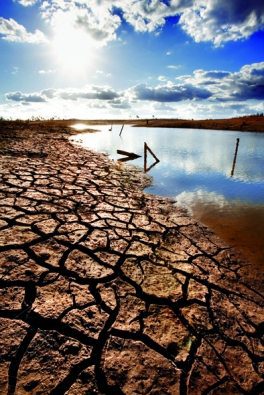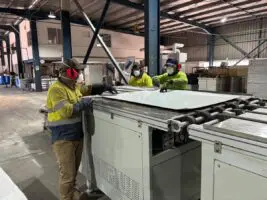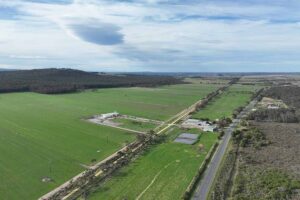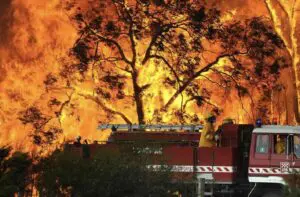Victoria forms part of Australia’s southern fringe. Lying between the deserts to the northwest, and oceans to the south, it has seen dramatic shifts of climate in the geologically recent past. Relict patches of desert mallee on Melbourne’s western fringes, and even a few stranded snow gums in its eastern suburbs, tell of times dramatically colder and drier than the present, and should warn us that Victoria is vulnerable to large swings in climate. Now, because of the volume of coal, oil, and gas humans are burning, the state’s climate is changing again.
Victoria is already warmer, on average, than it was a century ago, and extremes of temperature are becoming even more extreme. The “big dry” of 1997 to 2009 was the worst drought in 1000 years, and it culminated in a month-long heat wave that broke all records, damaging electricity and transport infrastructure and decimating wildlife. The “big wet” that followed provided some welcome relief by raising dam levels, but the relief may be short-lived. Victorians know water security is a long-term challenge that we must be prepared for. There are signs that el Niño may return later in 2012, bringing with it a return to drier conditions. The longer-term, rainfall is expected to be lower than the 20th century average, especially in the cooler months.
Climate change isn’t just about heat waves, droughts and rainfall. The state’s changing climate is likely to lead to less snowfall, more devastating bushfires, and the extinction of native species. And the warming of the oceans and the melting of glacial ice is causing sea levels to rise, possibly as much as a metre by the end of the century. This brings a significant risk of flooding in places like Hobsons Bay and the Gippsland Lakes. By the end of the century thousands of homes, as well as commercial buildings and iconic beaches may be threatened by rising seas.
The dangers of climate change have been known for decades, but as a society Australians have been slow to act. Victoria still draws more than 90% of its electricity from an ageing fleet of coal-fired power plants that include some of the most polluting in the world. Yet the state is blessed with excellent wind resources, as well as abundant sunshine.
We can’t expect that tackling a problem like climate change will have no costs. We will see it in our electricity bills, and in businesses and homes alike this should act as a spur to use resources more efficiently. In this, business and communities have been leading the way. Amcor, for example, has reduced its electricity use by 15% in its corrugated box plant, and its gas use by 30%, leading to an overall reduction in its greenhouse gas emissions of 20%. And the need to reduce emissions is also spurring innovation. At the One Steel, steel mill at Laverton, old car tyres are being substituted for coal in the steelmaking process, leading to less power demand, lowered greenhouse emissions, and less landfill. Wherever the Climate Commission has visited, but especially in regional Australia, we’ve met with individuals and businesses achieving similar innovation and greenhouse gas reductions.
Economic studies such as that by Lord Stern show that it’s worth paying the cost of reducing emissions now, for if we wait until our climate is changing even more rapidly, costs will escalate and the damage caused will be significant. The impact of the big dry gives us some idea of what climate change may bring in future. It lowered the inflow into Melbourne’s four major reservoirs by 40%, and caused an 80% reduction in crop yield, and a 40% reduction in livestock production in the state’s Wimmera-Southern Mallee region. Added to this must be the cost in human lives from the 2009 heat wave. Victoria experienced an eight-fold increase in hospital admissions for heat-related conditions, and a 62% increase in heat-related deaths. Without effective action on climate change, we can expect more such damaging weather and climate events in the future.
Climate scientists have designated this decade as “the critical decade” for action on climate change. That’s because unless we take significant steps to reduce our emissions by the end of the decade it will become increasingly difficult to keep global temperature rise at manageable levels.
Australia is playing a proud part in the global effort to reduce greenhouse gas pollution. As one of the top 20 largest emitting countries on Earth it’s vital that we do our bit, both in order to encourage others and to prepare our industries for the inevitable changes ahead.
Professor Tim Flannery is Chief Commissioner of the Climate Commission, which yesterday released the report Victorian climate impacts and opportunities
This article was originally published on The Conversation – theconversation.edu.au. Reproduced with permission.








